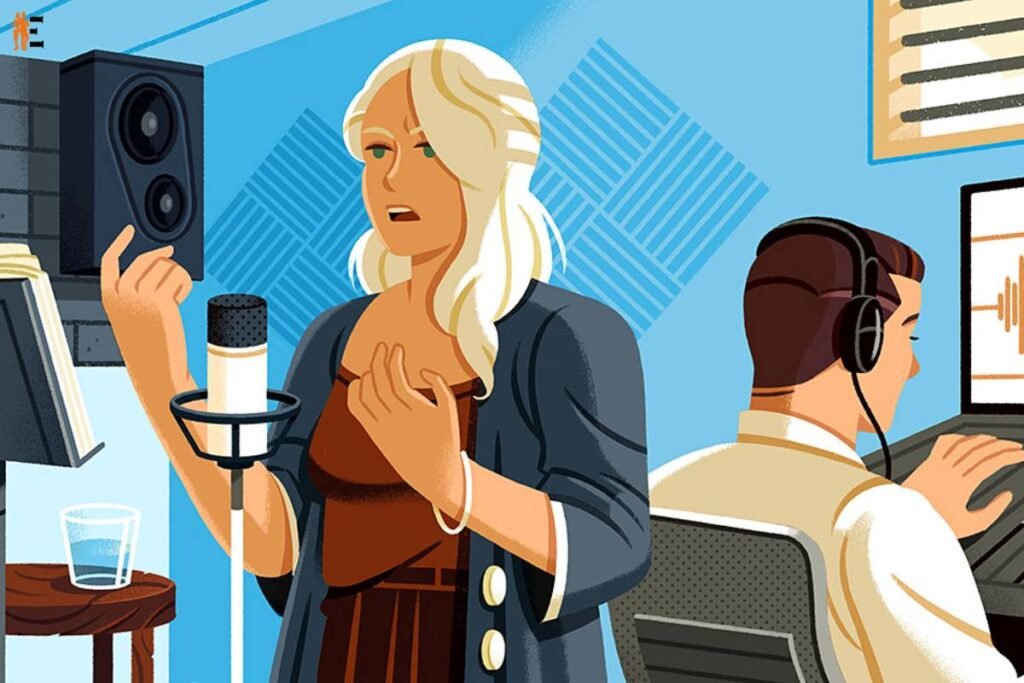The popularity of audiobooks has been on the rise in recent years, with more and more people opting for this convenient way of enjoying literature. As a result, starting an audiobook business is a viable small business idea that can generate significant revenue. In this article, we will explore the steps required to start an audiobook business, including market research, equipment, and software requirements, audiobook production, distribution and marketing strategies.
Here are 5 steps to start your audiobook business:
1. Market Research
The first step in starting an audiobook business is to conduct thorough market research to determine the viability of the business idea. The research should focus on identifying the target market, competition, and market trends.
Target Market
The target market for audiobooks is broad and includes avid readers who may not have the time to read, people who prefer listening to books while commuting, and individuals with visual impairments. Other potential target markets include students, people who are learning a new language, and individuals looking for self-help and personal development content.
Competition
There are several established audiobook businesses in the market, including Amazon’s Audible, Apple Books, and Google Play Books, to mention a few. These businesses have established a loyal customer base and offer a wide range of audiobooks, making it challenging for a new business to enter the market. However, by identifying a niche market and producing high-quality content, a new audiobook business can carve a niche for itself in the market.

Market Trends
The audiobook industry has been experiencing steady growth in recent years, with a projected growth rate of 25% from 2021 to 2025. The market trends indicate that the demand for audiobooks is likely to continue to grow as people increasingly prefer the convenience of listening to books over reading them.
2. Equipment and Software Requirements
The next step in starting an audiobook business is to identify the equipment and software required for audiobook production. The equipment needed for audiobook production includes a microphone, audio interface, headphones, and a computer. The software needed for audiobook production includes audio editing software, digital audio workstation software, and file conversion software.
Microphone
A good quality microphone is essential for producing high-quality audiobooks. The type of microphone chosen depends on personal preference and budget. A popular choice for audiobook production is the condenser microphone.
Audio Interface
An audio interface is required to connect the microphone to the computer. The audio interface converts analog signals from the microphone to digital signals that can be processed by the computer.
Headphones
Headphones are essential for monitoring the audio recording and ensuring that the recording is of high quality.
Computer
A computer is required for editing and processing the audio recording. The computer should have a fast processor and enough memory to handle the audio editing software.
Audio Editing Software
Audio editing software is used for editing and processing the audio recording. Popular choices for audio editing software include Adobe Audition, Pro Tools, and Audacity.
Digital Audio Workstation Software
Digital audio workstation software is used for mixing and mastering the audio recording. Popular choices for digital audio workstation software include Logic Pro X, Ableton Live, and FL Studio.
File Conversion Software
File conversion software is used to convert the audio recording to different file formats, such as MP3, WAV, and FLAC.
3. Audiobook Production
The next step in starting an audiobook business is to produce the audiobook. The audiobook production process involves four key stages pre-production, recording, editing, and mastering.

Pre-Production
The pre-production stage involves selecting the book to be recorded, obtaining the rights to the book, and preparing the script for recording. During the pre-production stage, it is also essential to identify the target audience and tailor the narration to suit their needs.
Recording
The recording stage involves recording the narration of the book using the equipment and software identified earlier. The recording should be done in a quiet and acoustically treated room to ensure that the sound quality is high. It is also essential to take breaks during the recording process to prevent fatigue, which can affect the quality of the recording.
Editing
The editing stage involves removing any errors and unwanted sounds from the recording. The editing process includes noise reduction, removing mouth clicks, and correcting any pronunciation errors. It is essential to maintain consistency in the narration and ensure that the pacing is appropriate for the target audience.
Mastering
The mastering stage involves ensuring that the overall sound quality of the recording is high. The mastering process includes equalizing the sound levels, adding compression, and adjusting the stereo field. It is essential to ensure that the final product is of high quality to meet the expectations of the target audience.
4. Distribution
The next step in starting an audiobook business is to distribute the audiobook. There are several options for distributing audiobooks, including self-distribution and distribution through audiobook retailers.
Self-Distribution
Self-distribution involves selling the audiobook directly to the consumer through a website or e-commerce platform. This option offers more control over the distribution process and allows for greater profits. However, self-distribution requires significant marketing efforts to reach the target audience.
Distribution through Audiobook Retailers
Distribution through audiobook retailers involves partnering with established audiobook retailers, such as Audible, Apple Books, and Google Play Books. This option offers wider exposure and a ready-made customer base. However, the distribution fees may reduce the profits generated from the audiobook sales.
5. Marketing Strategies
The final step in starting an audiobook business is to develop effective marketing strategies to reach the target audience. Marketing strategies for audiobooks include social media marketing, email marketing, and influencer marketing.
Social Media Marketing
Social media marketing involves using social media platforms, such as Facebook, Twitter, and Instagram, to promote the audiobook. Social media marketing allows for targeted advertising and offers an opportunity to engage with potential customers.
Email Marketing
Email marketing involves sending promotional emails to potential customers. Email marketing is an effective way to reach a large audience and can be used to promote new releases and discounts.

Influencer Marketing
Influencer marketing involves partnering with social media influencers to promote the audiobook. Influencer marketing offers an opportunity to reach a wider audience and can generate significant interest in audiobooks.
BOTTOM LINE
Starting an audiobook business is a viable small business idea that can generate significant revenue. However, it requires thorough market research, identification of the equipment and software required for audiobook production, production of high-quality audiobooks, effective distribution strategies, and marketing strategies to reach the target audience. With the growing demand for audiobooks, starting an audiobook business offers a promising opportunity for small business owners.











